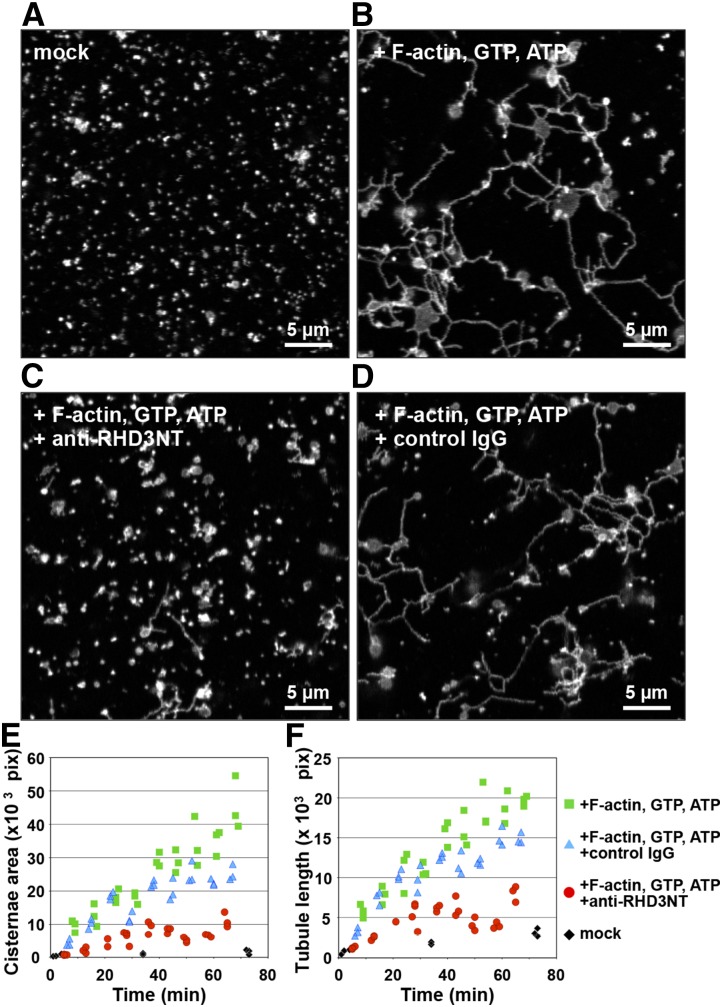Figure 2.
RHD3 is required for ER network formation in vitro. A and B, An in vitro ER network formation assay. The cytosol-microsome fraction (S12 fraction) from cultured tobacco cells expressing ER-luminal GFP was incubated for approximately 70 min in the absence (mock in A) or in the presence of actin filaments (F-actin) and the nucleotides GTP and ATP (B) and then was inspected with a confocal laser scanning microscope. Note that the ER tubules and cisternae were efficiently generated from the ER microsomes by incubating with F-actin and the nucleotides, resulting in creating the ER network in vitro. C and D, An S12 fraction that was preincubated with either anti-RHD3NT (C) or control IgG (D) was subjected to the in vitro ER network formation assay. Note that anti-RHD3NT, but not control IgG, abolished the formation of ER tubules and cisternae, which prevented ER network formation. E and F, Quantitative analyzes of ER cisterna formation (E) and ER tubule formation (F) during incubation of ER microsomes with F-actin and nucleotides. The areas of ER cisternae and the lengths of ER tubules were calculated by MorphoER software at the indicated time points. The experiments were repeated at least three times.

